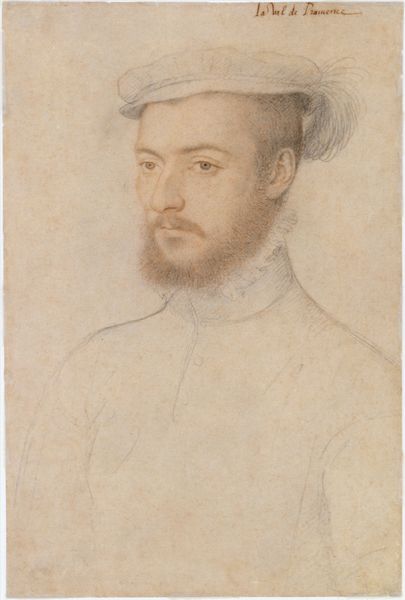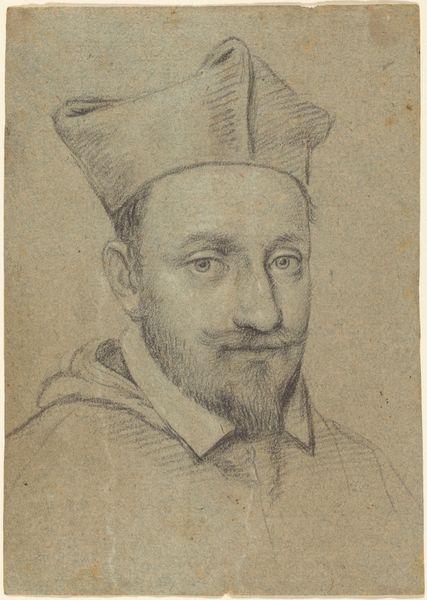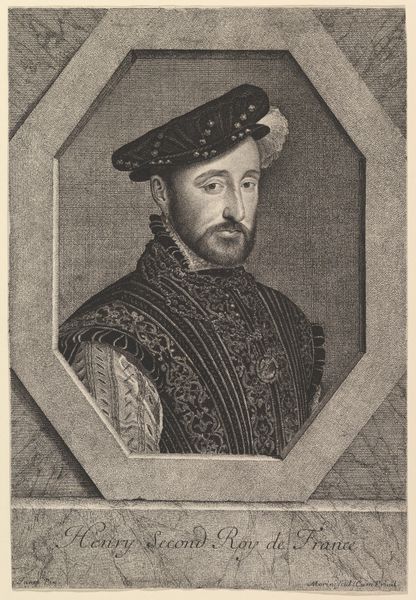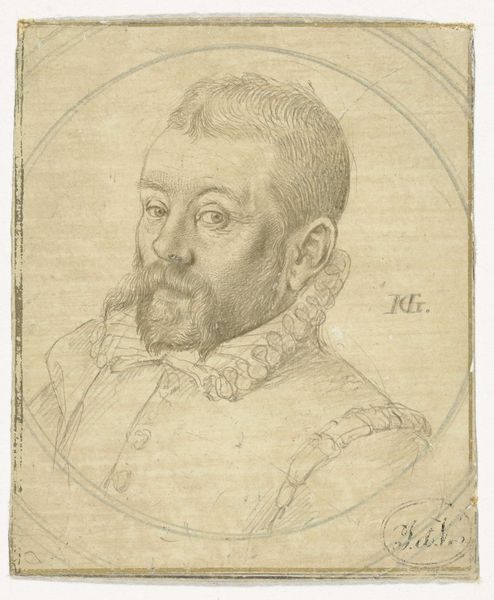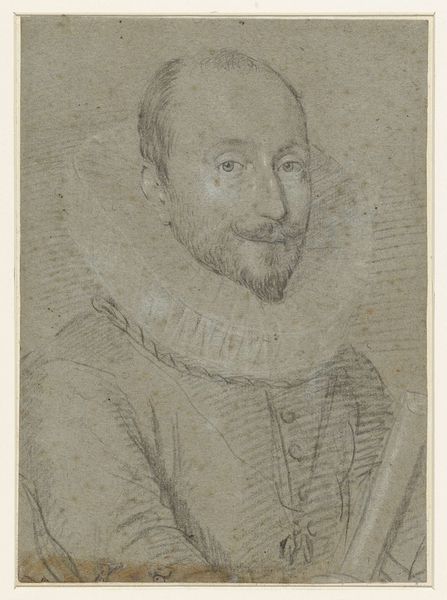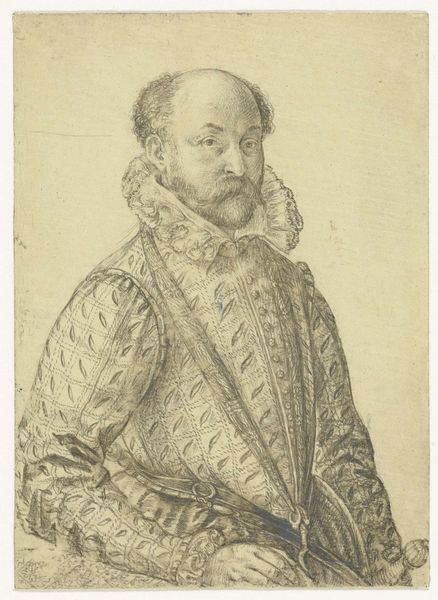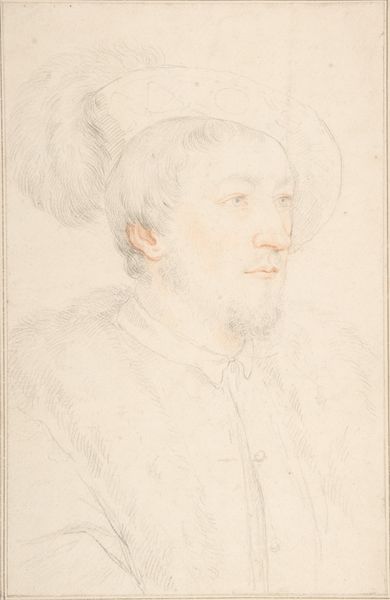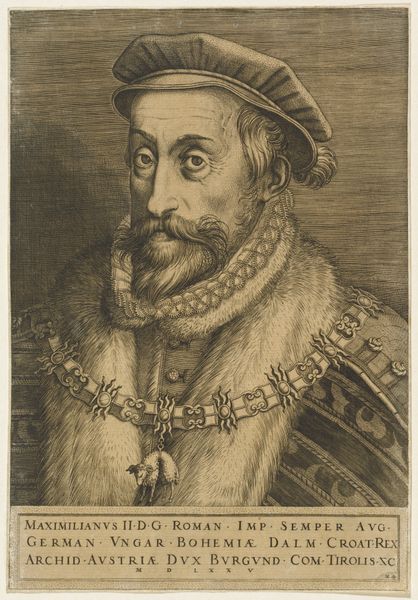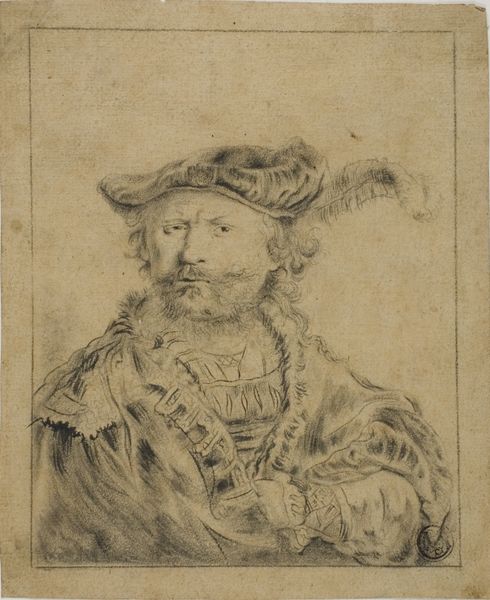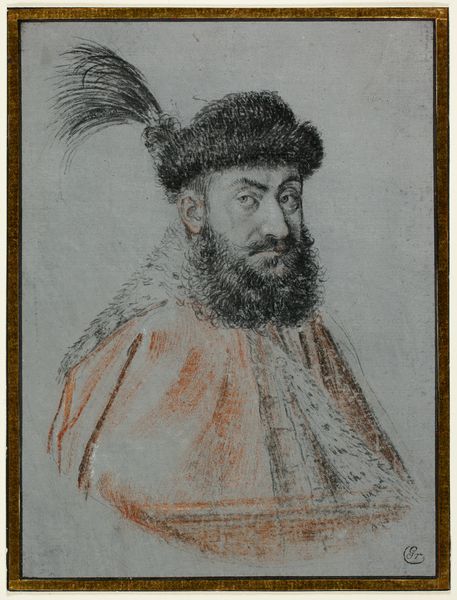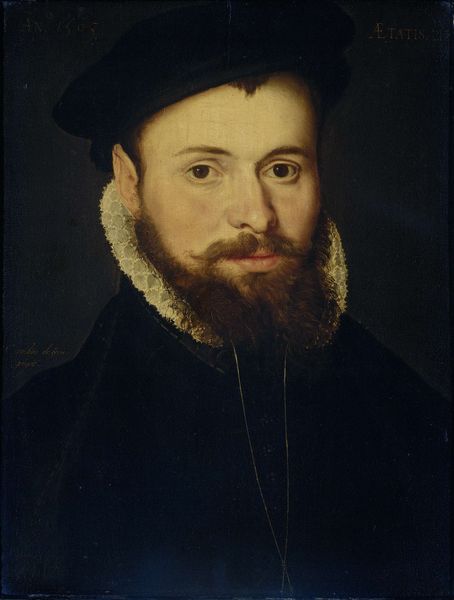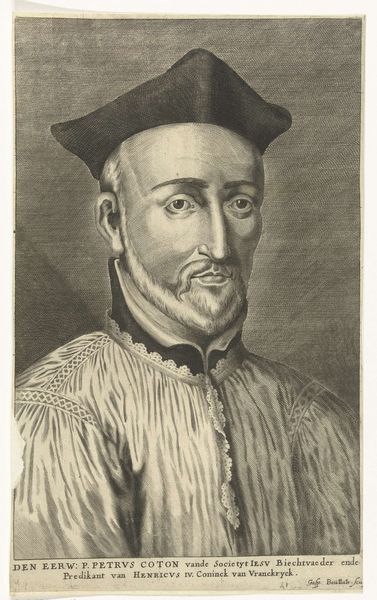
drawing, print, pencil
#
portrait
#
drawing
# print
#
charcoal drawing
#
figuration
#
11_renaissance
#
pencil drawing
#
pencil
#
northern-renaissance
#
watercolor
Dimensions: 10 7/8 x 8 1/8 in. (27.6 x 20.7 cm)
Copyright: Public Domain
Editor: We're looking at "Portrait of a Man," a 16th-century drawing attributed to François Clouet, held at the Metropolitan Museum of Art. The subtle hatching gives it a delicate feel. What do you notice about its composition and technique? Curator: Primarily, I observe a rigorous commitment to linear precision. Consider how the delicate tracery of the lace collar contrasts with the solidity implied by the sitter's facial structure and cap. The composition hinges on a clear distinction between form and surface. Notice, for instance, how the geometric exactitude defines the ruff, while the costume lacks detailed rendering. Editor: So, the focus is on line and form, rather than texture? Curator: Precisely. The textural nuances in the man's face serve to emphasize its three-dimensionality and differentiate it from the flatter treatment elsewhere. What meaning might reside in this strategic deployment of detail, would you surmise? Editor: Maybe to convey the sitter's importance by rendering his face so realistically, unlike the rest of his garments? Curator: Indeed, observe how that contrast dictates our engagement with the artwork. It demands we consider how Clouet orchestrates planes, textures and light not just for mimetic accuracy but also to stage our perception. What effect might that concentrated gaze, caught so masterfully in the rendering of the eyes, also achieve? Editor: It does feel as if his gaze captures the viewer, too. It's much more engaging once you notice all those nuances in shading and form. Curator: Agreed. This work underscores how artistic impact frequently stems from precise compositional choices and rigorous refinement of form, and invites closer appreciation.
Comments
No comments
Be the first to comment and join the conversation on the ultimate creative platform.
